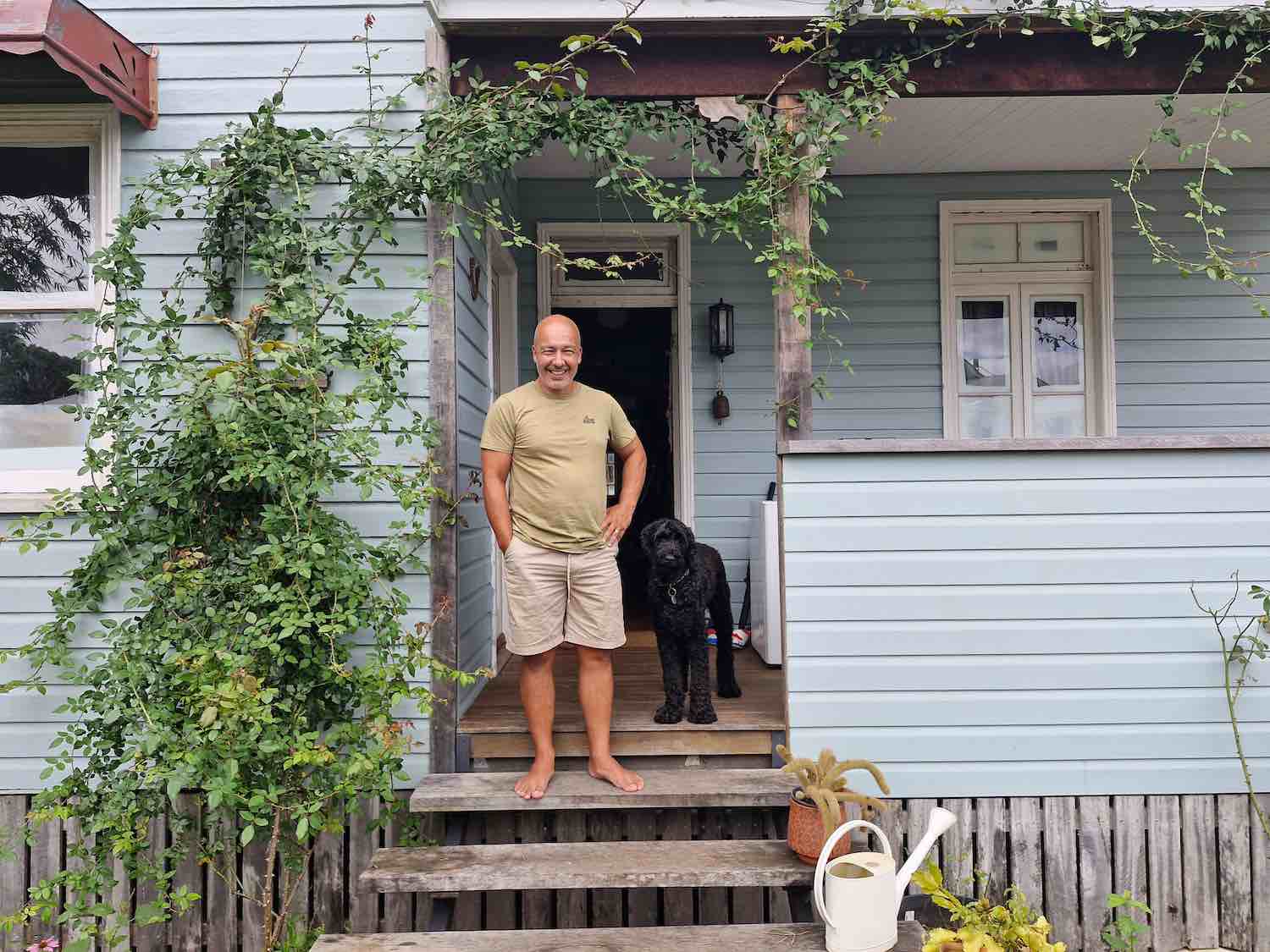
Anibal Zarate lived so well thanks to his home battery and solar set up during Tropical Cyclone Alfred that even his sceptical neighbours have been convinced it’s the way of the future.
The storm plunged more than 450,000 homes into darkness across Queensland and northern New South Wales, with the town of Bangalow, where Zarate lives, among the first to lose power last Wednesday.
“It’s funny how people feel lost without power. It’s dark, you need candles, you can’t do anything,” he says. “Just to have a light on is comforting. Just having milk that hasn’t turned to cheese is good.”
Bangalow is no stranger to power outages. A larger-than-average storm is enough to send the power offline in the town that sits at the gateway to the Byron Bay hinterland and the infamously bad mobile phone coverage makes communications difficult.
Zarate says he initially set up his solar array to be free of these problems. Since moving in, he has installed two 4 kilowatt (kW) solar arrays and two months ago added a 19.2 kilowatt-hour (kWh) modular battery by Sungrow.
When the cyclone formed and began its meandering path towards south-east Queensland, many turned to their electric car and the vehicle-to-load feature – a capability of BYD, MG and other models but not shared by Tesla – to act as an emergency generator.
Much bigger than most home batteries, batteries on wheels can provide enough power to run a fridge and smaller appliances for up to a week.
As the cyclone approached Zarate says there was some question about whether his home solar and storage system would be equipped to handle the demand from his family of five, but this proved not to be an issue.

“We had uninterrupted power through the whole weekend, so it’s big enough to power us overnight and during the day.
“Despite the fact we had cloudy weather, the solar was enough to feed the house and charge the battery,” he says.
“And if you don’t have a battery, you can’t use your solar. People put solar on the roof thinking you can power through things, but once the grid cuts out, you don’t have access anymore. It completes the system so it becomes 100% useful.
“If we had lost power, for us, it’s not the end of the world, but it’s all the little things you normally take for granted. We can do a bit of cooking, the refrigeration doesn’t go out, so things don’t spoil – we don’t miss a heartbeat.”
The system was robust enough that he was even able to help out neighbours.
Zarate says he slung a cable over his neighbour’s fence so they could keep their fridge running, and set up a bar fridge on his front porch for neighbours across the street to store milk and essentials.
He says helping each other in times of crisis is a natural part of life in the area – other people shared portable generators and Zarate says he offered neighbours who required power to manage health issues the opportunity to draw on his system if they needed.
The experience has taught some of his neighbours who initially baulked at the cost of investing in solar and battery storage to investigate options for themselves.
“I’ve had a couple of neighbours say they’re looking at it themselves, getting quotes,” he says.
“For us, it was quite an expensive set up, there’s no question, but we would do it over again. The cyclone confirmed we made the right decision for us.”

